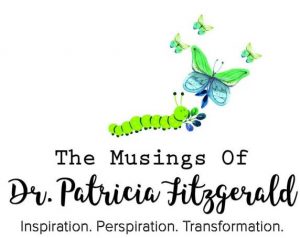Sunscreens have long been revered as our saving grace from skin cancer, premature aging, and sun damaged skin.
But recent warnings against the use of chemical-based sunscreens, including those released by Consumer Reports, the American Academy of Pediatrics, and the Environmental Working Group (EWG), along with the rising epidemic of Vitamin D deficiency, have left people with more questions than answers on the topic of sun safety.
- Do you risk it and go without?
- And, considering the real risk of Vitamin D deficiency, is going without as big a risk as we have been led to believe?
- Are certain brands of sunscreens or sunscreen ingredients safer than others?
- Which brands are truly “natural” …and does “natural” actually work?
As a long-time resident of California and lover of all things sunshine and skincare, this topic is near and dear to my heart.
Join me as we answer all these questions (and more) and shine a new light on both the health hazards of sunscreens and the undervalued health benefits of sunshine.
Too Much Sun Exposure Can Cause Cancer…But Too Little Causes Cancer Too
A few years ago, no one would have questioned the use of sunscreen as an effective method of preventing skin cancer. Unfortunately, we were encouraged to take this advice to an extreme; covering up with hats and SPF-protective clothing and applying high-SPF sunscreens any time we ventured outside.
However, due a rise in conditions related to Vitamin-D deficiency—including cancer1, depression2, and heart disease3, that wisdom is now being questioned.
How Much Sun Exposure is Healthy?
There is no magic number in this regard, and recommendations differ for everyone based on several factors including:
- Your skin type and color
- The amount of skin you expose
- Your geographical location
- The time of year
- The time of day
- The season
- You family history
For example, a light-skinned person may only require 10 minutes a day of unprotected sun to reap the optimal amount of Vitamin D, whereas a very dark skinned person may require 2 hours of unprotected sun…or more.
To find out the best amount of sunshine you, talk with your healthcare practitioner or visit the Vitamin D Council’s website for a chart that can help you calculate your needs based on the factors listed above.
What is Lurking in Your Typical Chemical Sunscreen?
Despite what we might believe, the FDA has very little regulation and jurisdiction over ingredients used in common skin care products, including sunscreen, as most of their resources are spent focusing on Food and Drugs.
What does this mean for the consumer? It means we have multibillion dollar, profit-driven, largely chemically-based industry left to police themselves on safety, testing, and disclosing adverse effects.
And though you may not think of skin care ingredients in the same way as food or medicine, the truth is everything you put into your skin winds up in your body. So, the ingredients in common skin care products are often a bigger source of carcinogenic toxins than what we find in our food supply.
Thankfully, consumer-watchdog organizations like the Environmental Working Group have tasked themselves with monitoring the skincare industry and educating consumers on the potentially harmful ingredients lurking in their everyday skin care products.
There have been numerous books written detailing the thousands of harmful chemicals found in personal care products, but the two big offenders when it comes to sunscreen are:
- Vitamin A (retinyl palmitate)
- Oxybenzone
Though Vitamin A appears to be a natural ingredient, a federal study revealed the Retinyl Palmitate form has been shown to increase the incidence of lesions and skin cancers in animals when exposed to sunlight4.
Thanks to the efforts of watchdog groups like EWG, use of this ingredient has decreased substantially in the last seven years, but it is still found in many chemical-based sunscreens.
Our second offender: Oxybenzone is heavily used in the sunscreen industry as a UV filter. Pick up any sunscreen at the local drug store (and even in health food stores–often with the word “natural” on the label) and it will probably list oxybenzone as an active ingredient. However, despite its effectiveness and common use, it has been shown to be an allergen and hormone disruptor5—which is particularly bad for women and children.
Other commonly used chemical UV filters: Octinoxate (Octylmethoxycinnamate) and Homosalate have also shown to have hormone-disrupting effects, with Octinoxate showing alteration effects on thyroid and behavior in animal studies5.
In addition to these harmful UV filters, popular sunscreen brands also contain a variety of controversial chemicals and preservatives, such as parabens, fragrances, and propylene glycol, that have not been proven safe for repeated use, and many of them banned in other countries.
Thankfully, in addition to covering up, there is an effective, completely natural alternative to chemical-based sunscreens…and it’s affordable too.
Minerals: The Ultimate Natural Sunscreen
Mineral-based sunscreens, now widely available in a variety of brands, offer a safe, natural, and effective alternative to chemical-based lotions.
The active natural ingredient in these products is typically Zinc Oxide (preferred) or Titanium Oxide, which create a natural barrier between your skin and sun, are sweat-resistant, and biodegradable so they’re safe for the oceans and coral too.
There are three things to keep in mind when choosing a mineral-based sunscreen:
- Some brands can leave a white film on your skin, which is a natural effect of the minerals. To avoid this, look for brands with the “very emollient” claim or try tinted products.
- Even mineral-based sunscreens can be full of sneaky chemicals, so it pays to read labels and choose products with the shortest lists of ingredients. Some trusted brands include: Suntegrity, MyChelle, Badger, Alba, Bullfrog, and Babyganics.
- There is some safety concern about the compounding effects of applying nano-based mineral sunscreens to your skin. However, you can avoid this by choosing non-nano brands, such as those recommended in the Environmental Working Group’s Guide to Sunscreens.
Given their proven effectiveness, availability, natural sourcing, affordability, and safety record, I highly recommend trading in your traditional sunscreens for a mineral-based product. Just remember to read the labels to ensure you are getting a clean, chemical-free product.
My favorite brands I personally use are:
I love the tint, moisturizer, and feel of these products and I don’t need to use any foundation with them.
Are Mineral-Based Sunscreen Sprays Also Safe?
Mineral-based sunscreens are believed to be safe…however, after years of treating lung issues in people I do have a differing opinion on this…
Though they have not raised health concerns or been issued warnings like their chemical-based cousins, the use of mineral sunscreen sprays is still new.
Therefore, given that even naturally-occurring substances can be harmful if inhaled, I would stick with the lotion-based screens—especially with children or those with lung issues.
Other Natural Sunscreen Alternatives
If mineral-based sunscreens aren’t your thing, there is still a lot you can do to protect your skin from the sun while still reaping its health benefits.
- Cover up—by using a hat and/or light long-sleeved clothing. I would personally skip the SPF clothing in favor of getting more Vitamin D, unless you have a concerning history of skin cancer in your family.
- Find shade—this way you will get a safe level of sunshine without overdoing it.
- Avoid the hottest times of day—for obvious reasons.
- Check the Weather Channel for UV information—some sunny days are stronger than others and the Weather Channel can help you plan accordingly.
Hats and Your Pineal Gland
Hats are a great way to help protect your face and head from too much sun, BUT as with sunscreen, you don’t want to overuse them.
Why? Because hats cover your pineal gland—a light-sensitive endocrine gland located in the center of your brain around eye-level. The pineal is a fascinating little gland made up of light-sensitive tissue, like our eyes, and produces melatonin which controls our sleep cycle, also known as the circadian rhythm.
So, even if you love hats, make it a point to give your pineal gland at least 30 minutes of unfiltered sunshine daily for optimal sleep.
The Bountiful Health Benefits of Just Enough Sunshine
Avoiding Vitamin D deficiency is the most obvious benefit of getting enough unfiltered sunshine, but there are so many more reasons to embrace the sun including:
- Prevention of certain types of cancer6
- It serves as a natural anti-depressant and improves mental well-being7
- Improvement in your sleep cycle8
- Clears up skin issues such as psoriasis9
- It Helps build strong bones10
- May reduce your risk of diabetes and metabolic syndrome11
- Enhanced immunity12
- Reduced risk of asthma in children13
- Reduced inflammation14
- It has also been suggested that children who spend more time outdoors grow more because of increased exposure to vitamin D in sunlight.
To Summarize
- We all need a certain amount of unfiltered sunshine daily for optimal Vitamin D levels and a host of other health benefits, including prevention of cancer and heart disease.
- You can discover how much daily sun exposure you need by talking with your healthcare practitioner or visiting the Vitamin D council’s website for a table and more information.
- Avoid chemical-based sunscreens that often contain carcinogens and hormonal disrupting chemicals, and opt for mineral-based sunscreens (the fewer ingredients the better).
- Cover up as another way to get more Vitamin D without getting too much sun. Opt for SPF-free clothing for more Vitamin D benefit.
- Expose your pineal gland to sunlight by taking off your hat for at least 30 minutes a day.
- Visit the Environmental Working Group’s website at: http://www.ewg.org/sunscreen/ for their latest recommendations on healthy sunscreens and other sun safety tips.
Wishing your health, happiness, and sunshine this summer!
-Dr. Patricia
- http://cjasn.asnjournals.org/content/3/5/1548.full
- https://www.ncbi.nlm.nih.gov/pmc/articles/PMC2908269/
- https://www.sciencedaily.com/releases/2013/05/130507195807.htm
- http://www.ewg.org/research/what-scientists-say-about-vitamin-sunscreen
- http://www.ewg.org/sunscreen/report/the-trouble-with-sunscreen-chemicals/
- http://cjasn.asnjournals.org/content/3/5/1548.full
- https://www.ncbi.nlm.nih.gov/pmc/articles/PMC2908269/
- https://www.ncbi.nlm.nih.gov/pmc/articles/PMC2290997/
- https://www.ncbi.nlm.nih.gov/pubmed/21271993
- https://www.ncbi.nlm.nih.gov/pmc/articles/PMC2290997/
- https://www.sciencedaily.com/releases/2015/02/150223140945.htm
- https://www.ncbi.nlm.nih.gov/pmc/articles/PMC2290997/
- https://www.sciencedaily.com/releases/2011/05/110518121028.htm
- https://www.ncbi.nlm.nih.gov/pubmed/21271993

